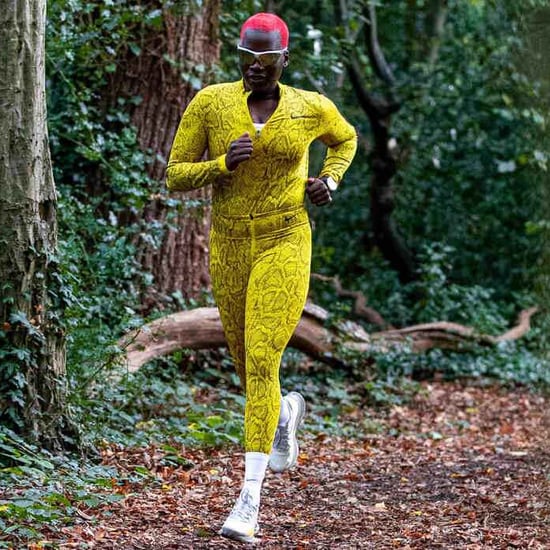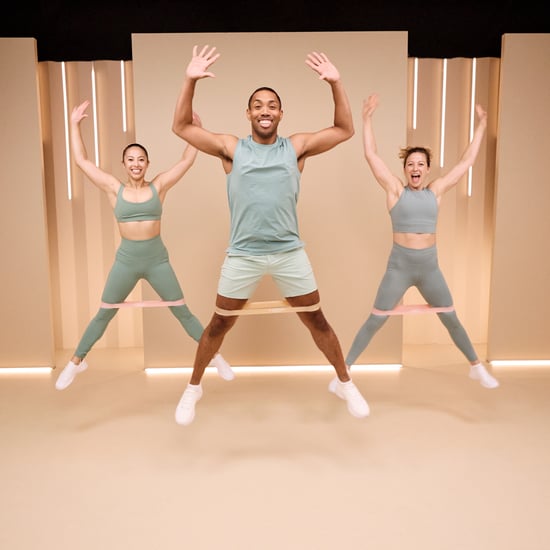How I Started Running After Injury
I Haven't Run For a Year and a Half — Here's How I'm Getting Back into Long-Run Shape

Injuries are never really "convenient," but I doubt I could've chosen a worse time to have a string of them (foot, other foot, hip, pelvis) than smack-dab in the middle of a pandemic. I craved the stress relief and endorphin burst of running and working out, but some new ache or pain seemed to pop up even during the most seemingly basic workouts.
After trying to figure it out by myself for months, I finally went to see a doctor for my lingering hip pain. That led to five months of physical therapy attempting to loosen my hips, correct my posture, and build up strength in my abs and glutes again, which had weakened when I took time off for other injuries and led to my pelvis getting out of alignment and causing all kinds of hip and lower back pain. I'd hit an injury spiral and it took a long time to even start thinking about going for a run or doing a HIIT workout again. Even once my physical therapist cleared me for activity, I was paranoid that anything, even going for a walk or doing yoga, would send me back down that rabbit hole of injuries.
A few months later, I'm finally starting to get back into running and a regular workout routine, and let me tell you, I've never been more grateful to have my lungs screaming at me at the end of a run or my quads trembling during a round of squats. From my initial injury in November 2019, it took over a year and a half to feel like I'm close to 100 percent again. So yes, returning from injury can be a long, often frustrating, sometimes defeating journey, and if you can relate, I hope the next few paragraphs can give you a glimmer of hope at the road ahead. If you are injured, the best thing to do is see a doctor; trust me when I say that resting and waiting doesn't cure every injury. But if that's not an option, or if you're wondering what one path back to workouts looks like, keep reading. Hopefully this experience can give you some recovery ideas and remind you that you can make your own comeback.
Bodyweight Core and Glute Workouts
Having a strong core is essential for runners: it makes you more efficient, helps you maintain form, stabilizes your torso, and helps prevent injury. Since my ultimate goal was to get back to running, my physical therapist recommended a series of ab and glute exercises to do at least once day, including:
- Glute bridge
- Fire hydrant
- Clamshell and clamshell with resistance band
- Standing kickback
- Elbow plank and side plank
As I progressed, we added resistance and more challenging moves, like:
Walking and Yoga
After a month of doing those foundational core moves once or twice a day, my physical therapist recommended I start doing short walks on flat ground. I started by walking half a mile about three times a week, then slowly progressed up to about a mile and a half before I started taking on hills.
At the same time, I started to filter yoga back into my routine, mostly gentle, stretching-focussed routines. Yoga was what triggered my initial hip pain, so I was especially careful with hip-focussed moves like runner's lunge and pigeon pose. I started by doing yoga twice a week and then slowly worked up to four to five days.
Low-Impact Barre and Bodyweight Workouts
Once I stopped feeling any kind of pain or soreness during walks and yoga, I started trying out low-impact bodyweight strength workouts. My physical therapist recommended against any kind of jumping, so I often modified moves like high knees, squat jumps, and mountain climbers to keep things easy on my joints, feet, and hips.
I also started doing barre workouts, because I'd realised during my recovery that some of my muscles weren't working the way they should be; I could feel that one of my glutes or one side of my obliques wasn't engageing like the other one was, which my physical therapist said could be contributing to my misalignment. For me, barre is a great way to laser-focus on certain muscles. I found that the small, precise movements, pulses, and high rep counts helped me light up these muscles I had a hard time turning "on." These workouts were typically low-impact as well.
Running
About five months after I started physical therapy (and almost a year and a half since my last pre-injury run), I laced up my running shoes again and hit the sidewalk. It's not easy or particularly fun to start running again after a long time off — your legs feel off-kilter, your sides cramp up, your lungs ache — so I started with flat, short, slow runs. I run outside, so I made sure to choose routes that I could change or shorten if needed and used my Apple Watch to monitor my pace and distance a lot more closely than usual. I went about 2.5 miles on my first run and added in walking breaks when I needed to, making sure to stretch out with yoga and foam rolling afterward.
I've been running about once a week for the past two months, going at an easy pace, mostly avoiding hills, and getting up to a long distance of five miles. Everyone comes back from injury a little differently, but this slow build-up and loose structure is what works for me. That's the main piece of advice I'd offer to anyone else coming back from injury: don't rush it, no matter how badly you want to get back to your normal routine. Listening to your body and your doctor is the best way to return to your regularly programmed workouts, runs, cycling classes, etc. in the healthiest way possible. Stay patient, ask for help when you need it, and you'll be tearing up your workouts again soon.








